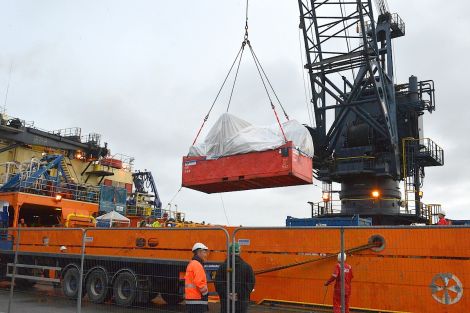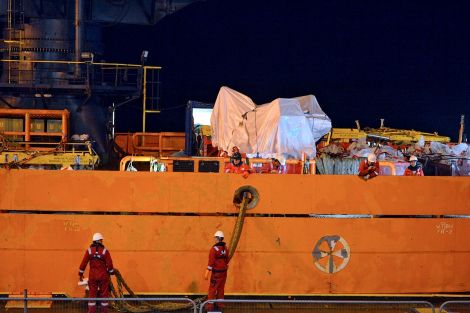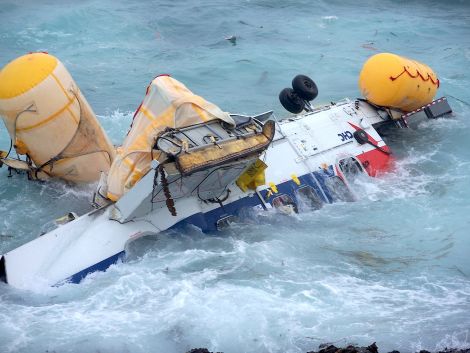News / Super Puma black box found on seabed
THE KEY to finding out why a Super Puma helicopter crashed into the sea killing four people on Friday night has finally been recovered from the seabed in Quendale Bay off Shetland’s south mainland.
Divers picked up the combined voice and flight data recorder on Thursday afternoon after locating its position the night before.
The black box had been transmitting ever since the aircraft with 18 people on board suffered a catastrophic loss of power and fell out of the sky two miles from its destination at Sumburgh airport.
An interim statement from the Air Accident Investigation Branch said the CHC operated helicopter had lost power three miles from the airport and started a rapid descent.
It stayed in the air for another mile before plunging into the sea close to the shore, allowing rescue teams to reach survivors rapidly and ensure 14 lives were saved.
Four people died in the fifth incident involving a Super Puma in the past five years, including the first woman to die in an oil industry offshore accident.
The AAIB said the helicopter was upright and in one piece when it hit the water and was broken up through repeatedly striking the rocky shoreline after drifting rapidly towards Garths Ness.
The black box will now be taken to the AAIB’s HQ in Farnborough for further inspection.
Meanwhile the helicopter fuselage has been unloaded from the dive support vessel Bibby Polaris on to a truck which will leave Shetland on board the NorthLink cargo boat Helliar, which is due to leave at 6pm.
The helicopter wreckage was brought into Lerwick harbour in the early hours of Thursday after it had been recovered from the sea on Sunday afternoon.
The Bibby Polaris has meanwhile left Lerwick harbour and is on her way to Total’s Alwyn platform, 100 miles to the east of Shetland.
Become a member of Shetland News
The AAIB report said: “Preliminary information indicates that the approach proceeded normally until approximately three miles from the runway when there was a reduction in airspeed accompanied by an increased rate of descent.
“The evidence currently available suggests that the helicopter was intact and upright when it entered the water.
“It then rapidly inverted and drifted northwards towards Garths Ness. The helicopter was largely broken up by repeated contact with the rocky shoreline.
“Some items of wreckage have already been recovered and will be transported to the AAIB’s HQ in Farnborough.
“Attempts to recover the combined voice and flight data recorder, together with other wreckage items, are continuing. This is a challenging operation due to the nature of the environment in which the wreckage is located.
“The investigation is ongoing and at this early stage it is not possible to identify the causal factors leading to the accident.”
Twelve oil workers and two crew survived the accident, and are being interviewed by specialists from the AAIB.
Further reading:
Chopper broke up after crashing, AAIB say
Chopper’s missing blackbox still beaming out
Become a member of Shetland News
Shetland News is asking its many readers to consider paying for membership to get additional features and services: -
- Remove non-local ads;
- Bookmark posts to read later;
- Exclusive curated weekly newsletter;
- Hide membership messages;
- Comments open for discussion.
If you appreciate what we do and feel strongly about impartial local journalism, then please become a member of Shetland News by either making a single payment, or setting up a monthly, quarterly or yearly subscription.






























































